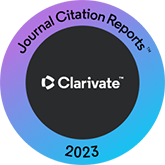Madīnat al-Zahrā', el paraíso y los fatimíes
DOI:
https://doi.org/10.3989/alqantara.2004.v25.i2.135Abstract
Qur'ānic verses on Paradise (especially Qur'ān, 55: 46-78), as well as the Kitāb waṣf al-firdaws by 'Abd al-Malik b. Ḥabīb, allow us to give specific meanings to the interpretation of Madinat al-Zahrā' as Paradise and to support it over other possible interpretations (although without necessarily eliminating the latter). On this basis, the variety and asymmetry of the wall decorations in the Hall of 'Abd al-Raḥmān III are explained, as well as how certain narratives on Madīnat al-Zahrā' came into being. The «green and manganese» decoration of the pottery produced in the town is given a new meaning and some considerations are offered on the name given to the town. A relationship can be established between Madīnat al-Zahrā' as Paradise and one of the doctrines attributed to Mundhir b. Sa'īd al-Ballūṭī, judge of Abd al-Raḥmān III from 339/950 until the death of the caliph. The silence of the Arab sources about this Paradisiac symbolism could be linked to the anecdote on how Mundhir b. Sa'īd censured 'Abd al-Raḥmān Ill's building activity. Finally, Madīnat al-Zahrā' has to be studied within the context of the political and religious struggle with the Fatimids, and more specifically taking into account the situation after the defeat of the «Man of the Donkey», who was presented as an eschatological figure by the Fatimids.
Downloads
Downloads
Published
How to Cite
Issue
Section
License
Copyright (c) 2004 Consejo Superior de Investigaciones Científicas (CSIC)

This work is licensed under a Creative Commons Attribution 4.0 International License.
© CSIC. Manuscripts published in both the print and online versions of this journal are the property of the Consejo Superior de Investigaciones Científicas, and quoting this source is a requirement for any partial or full reproduction.
All contents of this electronic edition, except where otherwise noted, are distributed under a Creative Commons Attribution 4.0 International (CC BY 4.0) licence. You may read the basic information and the legal text of the licence. The indication of the CC BY 4.0 licence must be expressly stated in this way when necessary.
Self-archiving in repositories, personal webpages or similar, of any version other than the final version of the work produced by the publisher, is not allowed.














